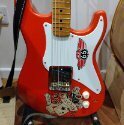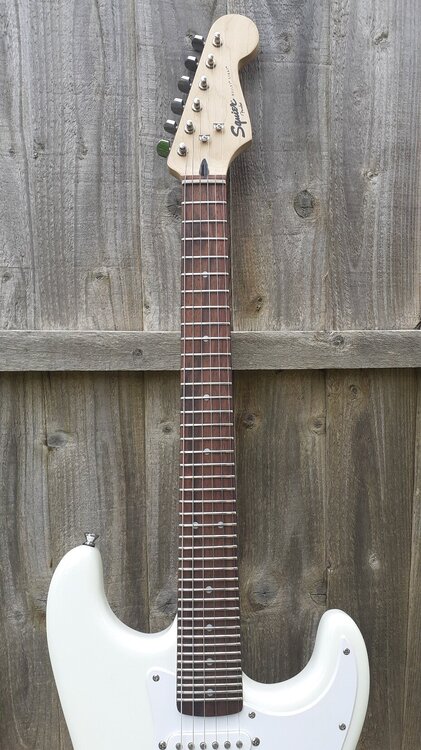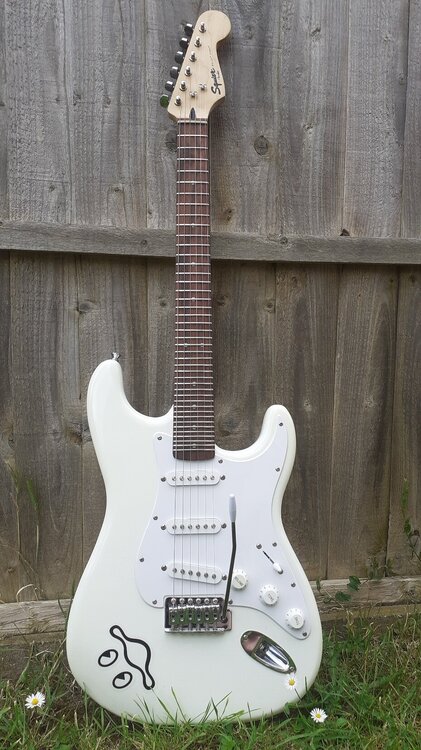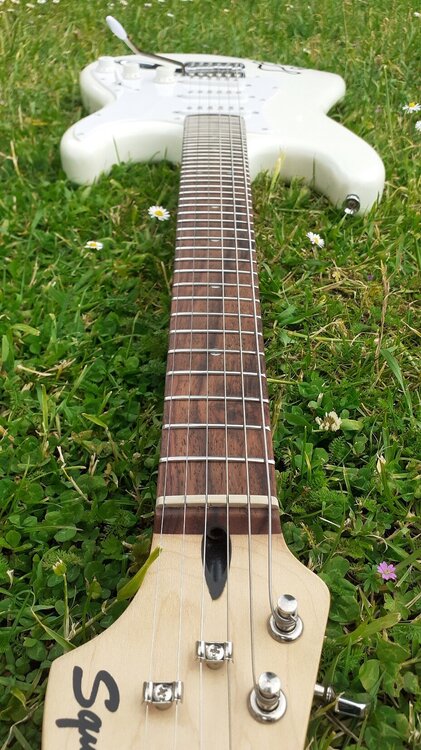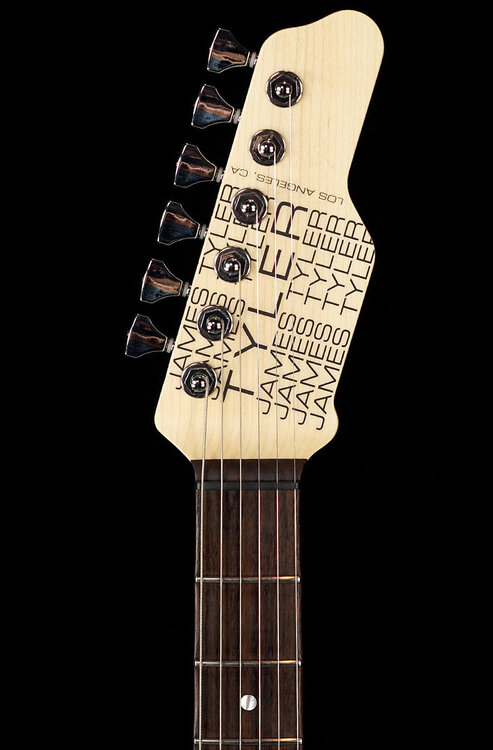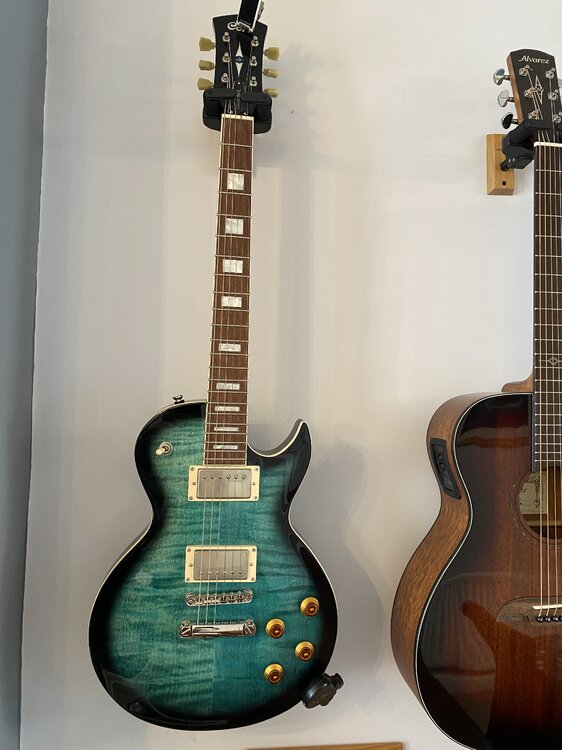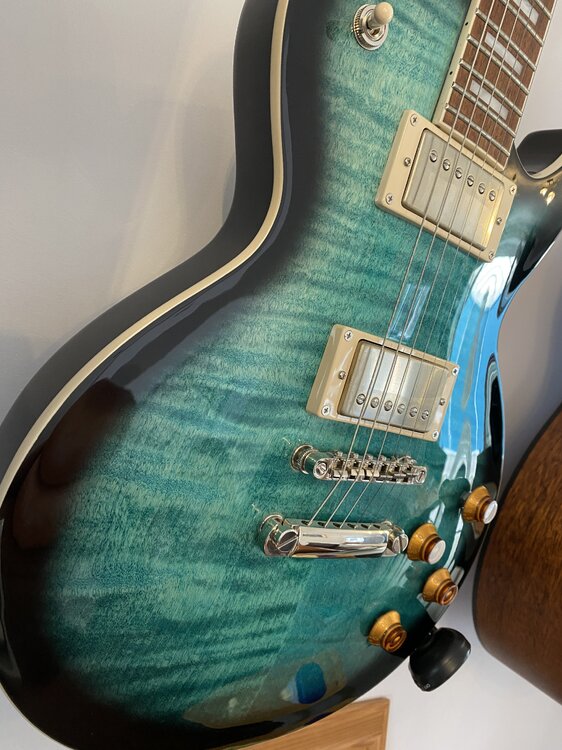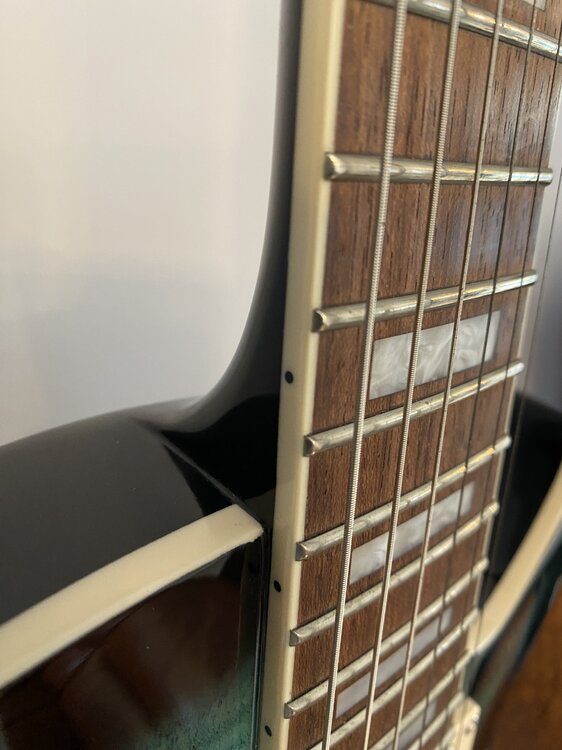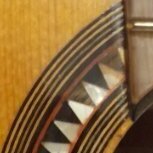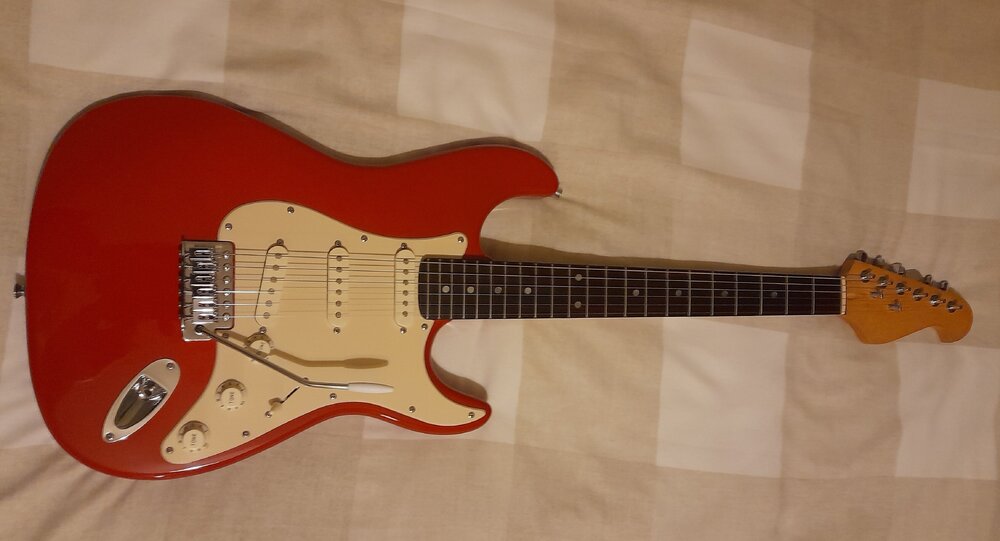Leaderboard
Popular Content
Showing content with the highest reputation on 18/06/24 in all areas
-
There is precedent for removing the bridge pickup and associated electronics, both Pat Metheny and Tuck Andress did/do this. Try it and, if it's still not right, put it back as was and move it on for something that you get along with.2 points
-
What about selling it and buying a nice gift for the donor, or explain to him that you aren't getting on with it and ask if he would mind you selling it. You could offer him all or some of the money minus any expenses.2 points
-
Son(16) is a fan of King Gizzard and the Lizard Wizard. Cheap Squier Bullet Strat from Cash Converters and a Most-Marvelous Inter-Fret Job by @Andyjr1515 fella who sits (slumps!) at the bar in the BassChat Arms... (Blah! Blah! and Pics in a BassChat Tech&Repair post) https://www.basschat.co.uk/topic/496955-microtonal-fretting-microwhat-but-sorry-not-on-a-bass/?do=findComment&comment=5264843 When 12TET and 20 or so frets just arn't enough... go 24TET and over 40 frets to play with!1 point
-
1 point
-
Thanks for these comments, much appreciated! Kind of goes with my own thinking. Decided to price up a complete pickup and re-wiring swap out last night and I don't think the guitar is worth it overall and/or I don't think it will make enough of a difference. I had a long play on it last night and I am getting more used to it, but playing the same way as I would on the acoustic. I couldn't get that big fat rich jazz tone that I hear on records but I assume that it a lot to do with playing style as much as anything. I will have a look on popular auction site and see if I can find a neck PAF like pickup at reasonable cost and do the Pat Metheny thing. Initially I could remove the bridge pickup and just bypass controls and go straight to the jack and do controls on the amp. If I prefer it I could then go to the effort of rewiring as appropriate. If I can then remove the whole wiring loom complete I should be able to re-instate it further down the line. If nothing else I can clean the pots with electrical cleaner to take away the odd crackles at that stage. If that doesn't help I think that selling it might be the better option and agree with @Crusoe that a nice gift with the money would be a good touch (an experience rather than a thing, otherwise that is something else to find space for in a smaller home). It is a very nice guitar and I do really want to love it and play it. Although I am not very sentimental about 'things', I do think a guitar needs the right person and perhaps it just isn't the right one for me. Thanks all and have a good day1 point
-
(Tongue in cheek, mostly...)... When you're next in France, bring it here; it's exactly the style of guitar that I affection (I have archtop Hofners and Samicks, guitars and basses; an Aria wouldn't go amiss...). It would get played..! On a more serious note, adding a floating p/u would be maybe the 'least-worst' option, and reversible to boot. Re-wiring with different p/u's etc would be a real waste, I'd say, both of the guitar and any money spent on parts swapped in. Storage..? Hmm... Who knows what your style may evolve to in the coming decades..? A bit of a long shot, though. No, I think the best thing would be to give/sell it to someone who will appreciate it for its intrinsic qualities, and even its provenance. How to find such a person..? Hmm... A tricky one. When are you next in France..? ...1 point
-
I’ve just realised that it’s also the exact same colour as the PRS SE semi-hollow I had a few years back. Given that Cor-Tek produce PRS SE models, I’m inclined to think that there was some PRS paint left over one day and a line foreman didn’t want it to go to waste1 point
-
Here it is, about to get treated to a good clean and some new strings. Setup seems spot on but I’ll check it all and set the pick-up heights to suit. The overall finish is superb - not just for the price but for a guitar of any price. The binding is lovely and clean with no gaps or flaws that I can see and the fret ends are super smooth (the frets need a good polish though). It needs a good clean up and some oil on the fretboard and I may swap the volume and tone knobs for black ones at some point but I do think I’ve blagged a real bargain for once1 point
-
1 point
-
They make a good basis for upgrading. I bought a better (push in) tremelo bridge, locking tuners and roller guides for the strings. I stripped all the plastics and hardware off, then rebuilt from scratch. The action was far too high when I got it as it had never been set up properly. Everything (and I mean everything) had to be cleaned (inside was still full of factory dust) adjusted and set up. I now have a very playable guitar, which has been seen and played by experienced band players, giving great feedback (verbal, not electronic! ) If you do decide to do upgrades, use a good quality metal ruler to take measurements accurately. There are varying neck and bridge measurements/string spacings to think about. I had to make the holes for the tuners larger to take the better quality ones. I also resoldered all the electrical connections (replaced some too) as some were almost dropping off.1 point
-
That's a fairly typical budget copy of a Fender Stratocaster. Benson guitars were often on Amazon and sold in the UK, usually in 'starter sets' which included an amp, guitar strap, guitar bag, cable, picks etc. They were invariably made in China in factories which tended to make a lot of copy guitars which were somewhat randomly branded with various names and logos on the headstock, but those factories also make a lot of outsourced fancier brands with the same cutting machines, so it will be as well made as more expensive guitars in terms of the neck and body cutting and shaping. Cheap guitars these days are pretty well made. The guitars themselves are of the kind of quality where they would cost between about 65 to 100 quid if sold alone, and the amp maybe around 40 quid or so. As noted, these days such guitars are made using CNC (computer numerical control) cutting machines, so they are well shaped and finished, with the neck being a good fit in the body's neck pocket. The wood such guitars are made from varies although the neck is certainly maple, the body is probably basswood and the fretboard could be any number of different woods such as poplar or purple heart, which is often dyed to look like rosewood. Older cheap guitars (made before 2018) did tend to have rosewood fretboards, but the CITES treaty now controls the export of endangered plant species, so more recently-made Chinese guitars tend not to have a rosewood fretboard, but in any case the wood it will be made from is probably fine for an inexpensive guitar and so this doesn't matter much. What all this means is that the basic 'bones' of the guitar is more or less as good as a Fender guitar of which it is a copy and in fact some Fender guitars, under their budget Squier brand, might even have been made in the very same factory where your guitar was made. Where budget guitars usually differ from more expensive guitars, is the hardware and the electrics, which you can upgrade with better stuff if you like, but for a beginner guitar to learn on or jam along with, it is okay for the job. The tuners will be cheap die-cast ones with probably something like a 10-1 turn ratio (how many times you have to turn the tuning peg button to have the string post make one rotation), which means they won't be very good at super-precise tuning (more expensive tuning pegs will have an 18-1 ratio). Cheap tuning pegs also tend to be made with pretty loose tolerances too, which does not help with very accurate tuning, but for 'messing about' they will probably suffice well enough. The nut is probably just run of the mill white plastic and this is okay, you can get better ones but it will do the job. The three pickups will almost certainly be cheaply-made ones with inexpensive magnets and probably a brass baseplate, but again, they will do the job although they won't sound as good as more expensive ones. Similarly, the wiring, selector switch, volume and tone pots and the jack socket will all be cheap and cheerful and again will do the job but won't be especially good quality. The same is true for the floating bridge/vibrato, which will be cheap cast metal rather than having been milled. Again, it will work, but won't be as sophisticated as a more expensive component. It's worth noting too that whether made in China, Indonesia, Korea, the US, or Europe, beyond cheaper hardware and electrical components being what makes a guitar cheap to manufacture and sell, what also reduces the cost, is the time spent doing finishing and setting up after it is made, because time is money. Cheap guitars tend to get made and given a very quick once over, and then they are packed up and sent out. Thus it's likely that, unless the previous owner spent time setting the thing up and doing things such as polishing the frets etc, it would benefit from having these things done to it. So... All of the cheap component parts can be replaced with better ones, and doing a decent set up on the guitar is not too hard either, and if you are prepared to do that, it could be made into a much better guitar (it would probably cost you a bit less than a hundred quid or so to get all the bits for that and if you spent an hour or two setting it up nicely, that would improve matters a lot), which would mean you'd have a guitar for a total outlay of around 150 quid, plus a bit of your time (not forgetting you got amp too) would be good enough for playing small gigs and recording with, and which would be as good as a guitar in around the 400 quid price bracket providing you did those tweaks. The good news for you is that the Fender Stratocaster is probably the most copied guitar in the world and so there are a ton of after-market spares and bits for them, most of which would fit your guitar, with no modifications since it is a copy with probably the exact same dimensions as a Fender Stratocaster. The means you can find decent bits for Stratocaster copies for not a lot of money. Setting up a guitar is not very hard to do, there are a ton of videos on youtube about how to do that, although you would need a few specific tools to do it well, but these are not hugely expensive to get hold of. The amp is a cheap generic transistor amp which is okay for practicing on, but it won't sound especially great. Then again, if you are just learning and noodling around with the guitar, it will do the job. As far as sounds go, even fairly cheap guitar pickups can sound good through a good amp so the ones on it are okay enough, but conversely, very good pickups will not sound great through a cheap amplifier, so a cheap amp is often the weak link in an electric guitar set up. Having said all that, for 45 quid you did well to get all that you got. It could easily have gone for about 80-100 quid for the guitar and amp if it was on Ebay or Reverb, so it was a bit of a bargain really. Just don't play it standing up with that guitar strap; it looks cheap and nasty and I would not trust it; if it lets go, your guitar will hit the ground hard and that won't do it any favours. Oh, and don't make a habit of propping it up against a radiator. I know you probably did that just to take the picture, but it can cause two things; if the radiator is on, it will heat the guitar neck up and things will expand and mess up the set up of the truss rod, and the square metal edge of the radiator can put dings in the back of the neck, which would be a shame because it looks in pretty good nick. One last thing: You might be unaware that this guitar would have originally had a 'tremelo arm' which could be fitted onto it. Strictly speaking, even though people call these 'tremelo arms', they are more correctly called vibrato arms. They screw into the threaded hole on the lower part of the bridge so you can use this to tilt the bridge back and forth and make the sound waver in pitch. The adjustable springs which counteract that action are accessed under the white plate on the back of the guitar. You can find them on Ebay, Temu, Ali Express etc, be aware however, that there are a couple of different thread sizes for these things, most cheap copies use a 5mm thread, but not all of them. It would look like this if you fitted one, although I think a chrome one would look better than the black one in this picture:1 point



